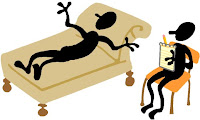Behavior Therapy
B.F. Skinner
(1904-1990)
Albert Bandura
(b.1925)
Arnold A. Lazarus
(b. 1932)
Goals:
To eliminate maladaptive behaviors & learn more effective behaviors.
To identify factors that influence behavior & find out what can be done about problematic behavior.
To encourage clients to take an active & collaborative role in clearly setting treatment goals & evaluating how well these goals are being met.
Key Concepts:
Focus is on overt behavior, precision in specifying goals of treatment, development of specific treatment plans, & objective evaluation of therapy outcomes.
Present behavior is given attention.
Therapy is based on the principles of learning theory.
Normal behavior is learned through reinforcement & imitation.
Abnormal behavior is the result of faulty learning.
Theories:
Behavior is the product of learning. People are both the product & the producer of the environment.
Traditional behavior therapy is based on classical & operant principles.
Contemporary behavior therapy has branched out into many directions. For example, Cognitive Behavior Therapy is a popular theoretical orientation among psychologists.
Other Techniques:
Reinforcement
Shaping
Modeling
Systematic Desensitization
Relaxation Methods
Flooding
Eye Movement
Desensitization Reprocessing
Cognitive Restructuring
Assertion & Social Skills Training
Self-Management Programs
Mindfulness & Acceptance Methods
Behavioral Rehearsal
Coaching
Various Multimodal Therapy Techniques
Diagnosis determine a treatment plan.
Questions include: what, how or when (not why).
Homework assignments
Bobo Doll Experiment
Resources:
Corey, G. (2013)..Theory and Practice of Counseling and Psychotherapy (9th ed.,). Belmont, CA: Brooks/Cole.
Google Images
YouTube































